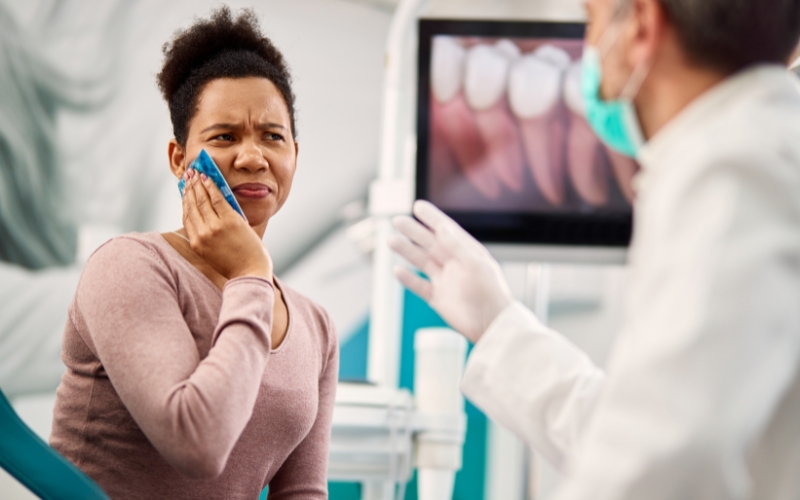
Gum graft surgery is one of the prevalent surgeries to deal with gum recession and prevent further harm to your teeth. As the surgery in most cases proves to be safe and successful, infection-related complications may arise even during healing. Identifying the warning signs of infection following gum graft surgery is essential. Early intervention can prevent serious oral complications. In most situations, reaching out to an emergency dentist right away can be the difference between retaining and losing the graft.
Let’s discuss symptoms to look for, why infection occurs, and what to do if you have one.
What Is Gum Graft Surgery?
Gum graft surgery entails the removal of tissue, typically from the top of the mouth, and grafting it onto spots where gum tissue has receded. This serves to:
- Shield exposed tooth roots
- Decrease sensitivity
- Enhance gum health
- Improve smile aesthetics
Healing usually takes 1 to 2 weeks. Complications like infection, however, can slow recovery and jeopardize the success of the graft.
Why Do Infections Happen?
Infections following gum graft surgery can happen because of:
- Poor oral hygiene after surgery
- Smoking while recovering
- Too much touching or irritation of the surgical area
- Dirty instruments or bacteria getting into the wound
- Underlying health issues (e.g., diabetes)
Your dental team will give you comprehensive post-op care instructions. Still, despite good care, infections can sometimes arise.
Signs of Infection After Gum Graft Surgery
Identifying symptoms early is crucial. If you experience any of the following signs, call your emergency dentist in Los Angeles immediately:
Swelling That Gets Worse Over Time
Mild swelling is normal in the first few days. However, if the swelling worsens or spreads, it could indicate an infection. Swelling that is warm to the touch should not be ignored.
Persistent or Severe Pain
Pain is common after gum graft surgery, but it should improve gradually each day. If your discomfort suddenly increases or becomes severe, especially beyond day 3, this could signal an underlying infection.
Foul Breath or Bad Taste
Bad taste in your mouth or bad-smelling breath can be a sign of infection. These are usually caused by pus developing in the infected tissue.
Ongoing Bleeding
Some bleeding is to be expected in the first 24–48 hours. However, ongoing or heavy bleeding several days after surgery can indicate that the tissue is infected or not healing well.
Pus or Discharge at the Site of Surgery
Any leaking pus or unusual fluid from the graft site is a warning sign. The healing tissue should be clean and pink, without any discharge to see.
Fever or Chills
Fever is how your body resists an infection. If you have a fever of 100.4°F or more, with other signs, contact your emergency dentist or doctor immediately.
When to See an Emergency Dentist?
If you notice any of these symptoms, don’t wait for your next appointment. Call an emergency dentist immediately. Treating it early can:
- Prevent graft failure
- Prevent further damage to the tissue
- Reduce additional surgery requirements
- Recover faster
Emergency dentists are equipped to treat complications immediately and efficiently. They can irrigate the affected area, give antibiotics, and take measures to save the graft.
How to Prevent Infection After Surgery?
To prevent infection, make sure to follow your dentist’s aftercare instructions carefully. Some of the main tips are:
- Avoid smoking and alcohol
- Maintain the area’s cleanliness, but avoid brushing directly on the graft
- Adhere to soft foods and refrain from spicy or hot foods
- Take all medications that your dentist has prescribed as per instructions
- Avoid touching or tugging at the graft site
By following these precautions, you can ensure a successful outcome and smooth recovery.
Don’t ignore The Warning Signs
Though gum graft surgery is very successful, infections are possible, particularly if you fail to follow post-op instructions. Being aware of post-gum graft surgery infection signs allows you to act quickly and safeguard your mouth’s health. If you experience increasing pain, unusual swelling, or pus, you should immediately contact an emergency dentist. Quick treatment not only saves your graft but also maintains your overall dental health.
Be vigilant, listen carefully, and don’t be afraid to ask for assistance if something doesn’t feel right—your smile is worth it.



